Today’s universities are on the forefront of technological
advancement, and greater access to technology can result in a more
valuable college experience. Whether a university is creating the next
wave of technology in its laboratories and research centers, or using it
everyday in its classrooms, university campuses are proving themselves
to be some of the most technologically advanced places in the world.
As part of our quest to find schools that will offer students the
greatest educational value, we were naturally curious to know which are
the techiest of these high-tech schools. To find them, we consulted
university websites, reviewed national surveys from college students
about their schools, searched various databases on subjects like
computer science, biometrics and social media, and looked over winners
of prestigious national awards such as the Innovators Awards. While we
realize the system is not perfect, we needed a useful way of helping
readers compare features among these various high-tech universities. The
point system we developed is explained below.
Awards
2 points — Major (national or international) award for technology or innovation
1 point — Regional or local award for technology or innovation
Additional Criteria
1 point — Per declared 10,000 square feet of subject-specific laboratory or research center
1 point — Facilities or research departments allowing research opportunity to undergraduate students
1 point — Nobel laureates on campus or listed amongst the alumni
1 point — The offering of tech features beyond traditional universities,
whether in the classrooms, residence halls, or department.
After reviewing several hundred candidates, we believe these fifty
universities are tops. They are ordered based upon points awarded, from
least to greatest. In the event of a tie, the editors used their
discretion.
50. Wofford College (2 points)
Spartanburg, South Carolina, U.S.A.
While Wofford College offers the usual Computer Science majors, cable
hookups in its residence halls, and extensive Wi-Fi support for its
students, it makes this list because of its unique site called “FYI:
First Year Interface.” Nearly every incoming freshman creates a profile
on the MySpace-like site to share profiles, photos, bedtimes, partying
habits, and any other useful information about themselves. Students who
become friends via FYI then have the opportunity to become roommates
once school begins.
49. Athabasca University (3 points)
Athabasca, Alberta, Canada
Athabasca University is a world leader in
distance education. In fact, at Athabasca all teaching, learning, and
administrative functions are executed in virtual space, or “Open
Knowledge Environment.” In order to move toward their goal of becoming a
fully online, virtual organization, Athabasca created systems for
desktop virtualization, synchronous web conferencing, research
collaboration, a tutor portal, course content management, online
assessments, student program planning, and more. Athabasca now boasts
more than 38,000 students from all over the world, and was the recipient
of Campus Technology magazine’s 2012 Innovator’s Award for Leadership,
Governance, and Policy.
48. University of Missouri — Columbia (3 points)
Columbia, Missouri, U.S.A.
Columbia has also implemented Tegrity lecture capture software into
classrooms. This software enables the University to capture course
lectures including slides, audio, video, document camera activities,
instructors’ pens, and interactive whiteboards. Students can then access
the recordings via the Internet, iPods and iPhones (which every
Columbia student is required to have), or other mobile devices. Later,
students can search for any word or phrase presented in class. With
Tegrity, Columbia classes and lectures are available 24/7.
47. Hamilton College (4 points)
Clinton, New York, U.S.A.
New York’s Hamilton College boasts a
computer to student ratio of nearly one computer for every two students —
one of the highest in the United States. For those students wishing to
bring their own computers to campus, Hamilton has serious requirements
as to which computers will be allowed to connect to Hamilton’s extensive
Wi-Fi network. Technology and engineering are both heavily present on
Hamilton’s campus, and companies like IBM, Google, and Apple have
recruited recent graduates.
46. Colgate University (4 points)
Hamilton, New York, U.S.A.

Colgate, a private, liberal arts university located in New York, was
one of the first colleges to introduce an independent Computer Science
program. Colgate’s Computer Science Club has also had the unique honor
of hosting Google Code Jam, an international programming competition
through which Google identifies top engineering talent for potential
employment. Though Colgate is known as a cutting edge university when it
comes to technology and engineering, the University still receives all
its electricity from hydroelectric power generated by Niagara Falls.
45. University of California San Diego (5 points)
San Diego, California, U.S.A.
Recipient of the Innovation Challenge
Award, University of California San Diego is one of the most
technologically advanced campuses in the University of California
system, a convenient thing considering the University’s most popular
majors include those within the schools of science and engineering.
Regardless of major, students at UCSD have access to the state of the
art, user-focused Science & Engineering Library. As California’s
premier library south of Los Angeles, the library serves as a major
intellectual resource for both students and the region’s biotech and
corporate communities. The library helps more than 450,000 in-person and
over 173.5000 online guests each year with everything from patents and
science information, to help with the over 3,000 e-journals and
thousands more e-books.
44. Pomona College (6 points)
Claremont, California, U.S.A.
Pomona is one of the five colleges making up the Claremont College
system (see also Harvey Mudd on this list). Students at Pomona have
access to all of the facilities, programs, and resources of the other
four schools, and can also participate in the Science, Technology, and
Society Program as either a concentration or major. The unique program
includes courses in “science and technology practice” and three
concentration courses on a specific science and technology issue of the
student’s choosing.
43. University of Richmond (6 points)
Richmond, Virginia, U.S.A.
The University of Richmond’s entire campus is wireless, which is a
good thing since 85% of the University’s courses include an online
component that allows students to share documents, notes, and other
class materials. Unlike many other universities, Richmond’s Tech Support
offers free, on-campus tech diagnosis for student computers. For those
students without a computer, Richmond boasts a computer to student ratio
of 1:3. As an added bonus, Richmond students are able to enjoy free
cable in each of the University’s residence halls.
42. Harvey Mudd College (6 points)
Claremont, California, U.S.A.
Computer Science and Engineering majors at Harvey Mudd College
complete their degrees with a capstone course referred to as the
“Clinic.” Throughout the yearlong course, students work in industry and
research laboratories to complete a product for an external client.
Recent student projects have included a proton accelerator for Los
Alamos National Laboratory, video surveillance applications for The
Aerospace Corporation, and a music recommender system for Fox
Interactive Media/MySpace.
41. Technical University of Dortmund (7 points)
Dortmund, Germany
Technical University of Dortmund is a
university highly ranked for its research performance in the areas of
physics, electrical engineering, chemistry, and economics. Dortmund has
especially strong programs in robotics and artificial intelligence, and
the University’s robot soccer team, the Dortmund Droids, were vice world
champions in the RoboWorld Cup 2002 and third in 2003. Students at
Dortmund also have study abroad and collaboration opportunities with
Dortmund’s many partner universities in countries throughout Europe,
Asia, and North America.
40. Utah State University (8 points)
Logan, Utah, U.S.A.
At Utah State University, students don’t bring notebooks, or even
laptops, to class. Instead, Utah State employs “Smart Classrooms”
equipped with Panopto lecture capture technology. The University also
collaborates with smart furniture companies like Steelcase and Izzy+ to
maximize the design of their intelligent classrooms. In fact, in an
attempt to encourage a collaborative environment amongst both students
and professors, Utah State now refers to rooms not as “classrooms,” but
as “pods.”
39. Ben-Gurion University of the Negev (9 points)
Beer-Sheva, Israel
Ben-Gurion is one of the most important centers in the Middle East
for teaching and research. The University is a major collaborative
partner of the Massachusetts Institute of Technology. In addition to a
15-week Summer exchange program for students from both campuses, the two
schools have now implemented a joint seed fund to encourage research
collaboration. Ben-Gurion boasts eight research institutes, including
the Ilse Katz Institute for Nanoscale Science and Technology and the
Edmond J. Safra Center for the Design and Engineering of Functional
Biopolymers.
38. University of Massachusetts — Boston (10 points)
Boston, Massachusetts, U.S.A.
University of Massachusetts, Boston’s only public university,
implemented a unique toolkit that allows students with vision or hearing
impairments to participate in classes. The initiative began when a
student both blind and deaf signed up for online classes. The
University, which at the time could not accommodate such a student,
responded by creating a system in which a professional captioning writer
transcribes the live dialogue of the classroom and sends the captions
to both a Jaws screen reader and a braille keyboard. There are currently
multiple blind and/or deaf students taking classes through the
University.
37. Brigham Young University (10 points)
Provo, Utah, U.S.A.
Brigham Young University (BYU) makes a huge effort to emphasize
mentorships and research opportunities for its undergraduates. Faculty
are provided with strong incentives to make money from tech innovations,
and are offered 45% of royalties, creating ample opportunity for
student research positions. In addition to a Technology Transfer Office,
BYU has a Creative Works Office that manages licensing for BYU-created
software, videos, and instructional materials, among other things.
Additionally, BYU is consistently ranked near the top of the list for
number of patents applied for.
36. Rochester Institute of Technology (11 points)
Rochester, New York, U.S.A.
Founded in 1829, Rochester Institute of Technology (RIT) separates
itself from other institutes of technology by focusing on career
education and experiential learning. RIT ranks third nationally among
schools companies prefer when recruiting and hiring for aerospace and
defense industry positions. RIT graduates are employed by leading
organizations like Lockheed Martin, Boeing, General Electric, and a
number of others. Many of these graduates got their starts in RIT’s
student incubator, the Simone Center for Student Innovation and
Entrepreneurship, which is ranked first in the nation for incubator
programs.
35. Aalborg University (12 points)
Aalborg, Denmark
Aalborg University is one of the leading universities in the world
with health technology research, wireless communication, energy,
computer science, innovation economics, and comparative welfare studies.
At Aalborg, research is conducted within all faculties, and
cross-disciplinary study is key to its methodology. The University has
also established additional research centers at universities in India,
Indonesia, Italy, and China, allowing study abroad opportunities to its
students, and cross-cultural research ability to its researchers and
faculty.
34. Wake Forest University (12 points)
Winston-Salem, North Carolina, U.S.A.
The student to computer ratio at Wake Forest University is 1.08 to 1,
one of the highest in the country. As if that weren’t impressive
enough, the North Carolina University also boasts the “Wake Forest
Campus Life,” an app that updates 24 hours a day and keeps students,
faculty, and parents connected to what is happening on campus. To access
the app, students have the benefit of extensive Wi-Fi throughout both
campus buildings and residence halls. Recently, Google awarded Wake
Forest’s Computer Science and Physics departments a grant with which to
organize computation-thinking workshops for local schools.
33. Delft University of Technology (15 points)
Delft, The Netherlands
Established in 1842 by King William II of the Netherlands, Delft
University of Technology, or TU Delft, is a well-known research
institution. TU Delft is home to more than 3,300 scientists and 2,200
members of support staff in the University’s numerous research
institutes. These research institutes strive to combine cutting edge
education, training, and research opportunities for postgraduate
students, PhD candidates, and postdoctoral researchers in a variety of
fields.
32. Australian National University (16 points)
Canberra, ACT, Australia
The Australian National University (ANU) boasts two Research Schools
within their College of Engineering and Computer Science alone. Student-
and faculty-run research groups include Algorithms and Data, Applied
Signal Processing, Artificial Intelligence, Computer Vision and
Robotics, and much more. ANU students and staff also take part in
Innovation ACT, a program designed for learning entrepreneurial skills
in scientific and technical industries. The program consists of a series
of workshops and seminars, and ends with a business planning
competition with a first prize of $20,000.
31. Al-Farabi Kazakh National University (16 points)
Almaty, Kazakhstan
Al-Farabi Kazakh National University, one of the oldest and most
established universities in Central Asia, offers 14 schools in Science,
Engineering, Humanities, and Social Sciences. Through its close
relationships with a number of leading universities from around the
world, al-Farabi is a member of the Indo-US Collaboration for
Engineering Education and in 2011, launched a Global Classroom with the
support of Columbia University. The University is also home to the first
(and currently only) Hewlett-Packard training and research center.
30. University of Texas — Austin (16 points)
Austin, Texas, U.S.A.
University of Texas at Austin has established quite a name for itself
in the world of science and technology. The city, with big help from
the University, hosts the annual South by Southwest Interactive
festival, where panel discussions on various technological breakthroughs
draw thousands. Earlier this year, university students and researchers
at the Cockrell School of Engineering successfully built the world’s
smallest and fastest nanometer, which they hope will eventually lead to
the ability to deliver insulin to diabetes sufferers or focus on
individual cancer cells.
29. National University of Singapore (17 points)
Singapore
National University of Singapore (NUS) is a top global university.
With over 37,000 students from 100 different countries, NUS strives to
offer a global approach to both education and research opportunity. The
University boasts three Research Centers of Excellence, 23
university-level research institutes, and shares a close working
relationships with at least 16 national-level research institutes. NUS
is best known for its research in engineering, life sciences and
biomedicine, social sciences, and natural sciences. In recent years, NUS
students have participated in major research thrusts in fields such as
quantum technology, cancer medicine, digital media, and the environment.
28. University of Melbourne (18 points)
Melbourne, Australia
University of Melbourne enjoys a long history of technological
development, and continues to base its curriculum on innovation.
Melbourne’s numerous laboratories continue to be at the forefront of
international scholarship, and students and faculty are conducting
research on diverse topics that include human rights law, climate
change, telecommunications, and medical research. In fact, in the same
University lab in which the Bionic Ear was created in the 1970s,
researchers are now making advances with the Bionic Eye, which they say
will provide high-resolution images to thousands with severely impaired
vision.
27. Auckland University of Technology (18 points)
Auckland, New Zealand
Auckland University of Technology is dedicated to providing its
students with the ability to provide unique solutions to the many
problems of the world. Most notably, the University owns Auckland
UniServices Limited, the largest research and development company of its
kind in Australasia. UniServices manages the intellectual property of
the University and the University’s students, and is responsible for all
research-based consultancy partnerships. By connecting companies and
other clients with the University’s brightest minds, UniServices
provides students with unique opportunities for success and commercial
organizations with innovative technologies.
26. Montana State University (19 points)
Bozeman, Montana, U.S.A.
In order to stop the brain drain of graduates and other talent from
Montana, Montana State University developed its technology transfer
program in 1990. The University is now equipped with incubators and
accelerators to foster entrepreneurship and innovation, and grants
students access to state of the art facilities and mentorship. Through
the program TechLink, students are given opportunities to develop
start-up companies or conduct research with funding from the Defense
Department, NASA, and other government buyers. The University’s
technological advancements have successfully turned university-level
innovation into local companies and jobs.
25. University of Waterloo (21 points)
Waterloo, Ontario, Canada
Considered to be Canada’s most innovative university, Waterloo boasts
multiple programs of advanced research and teaching in science,
engineering, health, environment, arts, and social sciences. With
students conducting research in everything from quantum computing and
nanotechnology to clinical psychology and health sciences, Waterloo
strives to bring brilliant minds and state of the art laboratories and
research centers together to advance science and technology. Waterloo
also boasts additional education centers on three other continents and
academic partnerships worldwide.
24. University of Tokyo (22 points)
Bunkyo, Tokyo, Japan
University of Tokyo, better known as Todai,
is a world-class research university with five campuses throughout the
Tokyo region. The University is home to a number of research
laboratories, each of which is segregated by the age of the students
using it — a nice perk for those students whose class status would
otherwise limit their laboratory time. Considered to be the most
prestigious university in Japan, Todai ranks as the highest in Asia and
the 21st in the world according to the Academic Ranking of World
Universities.
23. Academy of Art University
San Francisco, California, U.S.A. (23 points)
This San Francisco-based university offers 23 different art and
design schools that range from Architecture and Advertising to Fashion
and Web Design. Almost every school is located in its own building
throughout San Francisco, and offers its students access to state of the
art equipment, software, recording booths, film sets, and just about
anything else students need to study at industry-level standards. All
computers are leased and replaced every two years to ensure students are
using the newest equipment, and each school (led by working industry
professionals) strives to keep its equipment and teachings six months
ahead of its respective industry.
22. Washington University — St. Louis (25 points)
St. Louis, Missouri, U.S.A.
In recent years, Washington University has taken on the task of
integrating technology into all aspects of campus life: academics,
research, and administration. For those interested in technology as a
major, the Computer Science and Engineering department offers students
more than 80 courses ranging from business ethics to team formation, to
finance and intellectual property. Though some Washington students
complain about high fees for internet and television access, a
high-speed campus network connects all of Washington University’s
campuses and provides easy links to the Internet2 and National Lambda
Rail research networks.
21. University of Bologna (27 points)
Bologna, Italy
The oldest university in Europe is also the most technologically
advanced. Each month, there are more than three million accesses to the
University of Bologna’s web portal, making it the most visited
university website in Italy. The website’s success is the result of the
University’s computerized library services, through which end-users can
perform electronic searches in the University of Bologna’s catalog as
well as other national catalogues. The University’s library contains
several million volumes and provides access to the very best in
scientific and academic publications from all over the world.
20. University of Sussex (29 points)
Brighton and Hove, England, United Kingdom
Ranked as one of the most influential institutions in the world, the
University of Sussex considers research to be at the heart of its
academic activity. The University is on its way to reaching its goal of
doubling its research income to £54m, and creating three new,
interdisciplinary research centers. World-class research is conducted
within the Sussex Schools of Business and Management, Education and
Social Work, Engineering and Informatics, Life Sciences, Mathematics and
Physical Sciences, and others.
19. University of Toronto (31 points)
Toronto, Ontario, Canada
University of Toronto has become the new focus for not only those in
the tech world, but prospective students interested in technology and
Artificial Intelligence. Professor Geoffrey Hinton recently began an
Artificial Intelligence company incubated at the University before being
purchased during only its first phase. Another professor, Steve Mann,
has made significant progress with his smart devices known as “wearable
technology.” University of Toronto has become synonymous with the idea
of innovation in recent years, and has produced ten Nobel Laureates to
prove it.
18. Nanyang Technological University (34 points)
Singapore
\

Nanyang Technological University (NTU) is a research-intensive public
university with 32,500 students (both undergraduate and graduate) and
four colleges, including Engineering and Science. NTU’s College of
Engineering has a research output among the top three universities
globally and is the 5th most cited in the world, while the College of
Science boasts an award-winning faculty and world-class laboratories.
The University is also home to several world-class institutes, including
the Earth Observatory of Singapore, the Singapore Centre on
Environmental Life Sciences Engineering, and the National Institute of
Education — all of which employ NTU students in roles such as research
assistant.
17. University of Michigan (36 points)
Ann Arbor, Michigan, U.S.A.
The University of Michigan is the state’s oldest university and only
public research university. With technology at the forefront of many of U
of M’s departments, it is no wonder Michigan students enjoy a plethora
of technological advancements that make their on-campus life easier. In
addition to the usual IT Services and extensive Wi-Fi available
throughout campus, Michigan students are given Cloud storage, access to
more than 2,500 Windows and Mac computers and printers, and free
security software. They can also use the Community online directory to
find contact information for anyone in the Michigan community.
16. Technische Universität München (TUM) (37 points)
Munich, Germany
Technische Universität München (TUM) is one of the top universities
in Europe. In fact, it was one of the first universities in Germany to
be named a University of Excellence. TUM has multiple Corporate Research
Centers in which students are able to conduct research independently of
the faculties in anything from life sciences to neutron physics. With
its “Emerging Field Policy,” TUM’s researchers and faculty are dedicated
to discovering new ways to move society forward. Organized according to
the highest international standards, it is little wonder TUM was also
rated by the International Shanghai Ranking as the best German
university in 2011, 2012, and 2013.
15. Princeton University (54 points)
Princeton, New Jersey, U.S.A.
By endowment per student, Princeton is the wealthiest university in
the world, making it a place of opportunity for ambitious students
interested in science, technology, or research of any kind. The newest
building on campus, the Frick Chemistry Laboratory, is a state of the
art facility designed especially for research in the 21st century. The
Mass Spectroscopy Facility and the Nuclear Magnetic Resonance Laboratory
both house a variety of spectrometers and serve a large community of
users.
14. Technion-Israel Institute of Technology (56 points)
Haifa, Israel
Israel has become one of the world’s hotspots for tech, and Technion
is where many of the country’s brightest minds go to work and train.
Fully committed to technological advancement, Technion is currently
collaborating with Cornell University to build a $2 billion tech campus
and startup incubator in New York. The project, meant to generate 600
start up companies and $23 billion in economic activity over the next
three decades, will provide Technion students with ample opportunity to
research and create on a professional, international level. The main
campus in Israel boasts 52 research centers, and has produced four Nobel
laureates, three of which currently serve on the faculty.
13. Purdue University (65 points)
West Lafayette, Indiana, U.S.A.
The IT departments at Purdue University have developed multiple
social media-related systems that enhance Purdue students’ abilities to
communicate before, during, and after classes. For example, the app
“Hotseat” employs a Twitter-like interface that enables a flow of
student questions and answers in a classroom setting. The app ”Mixable”
helps students create their own learning networks and study groups,
while “Doubletake” allows students to capture, share, and watch lecture
videos with their cell phones. According to Purdue IT, these
applications have successfully boosted student engagement,
collaboration, and success.
12. Oxford University (91 points)
Oxford, England, United Kingdom
In addition to being one of the top universities in the world, Oxford
University provides its students with a vast array of technology
services. The University’s IT services and help center acts as the
initial point of support for students’ personal computers. The same
department also manages a Podcasting service through which University
talks, lectures, and activities are developed and published. Oxford
students also have access to OxFile, a file exchange that allows both
students and faculty to exchange larger, usually academic, files over
the Internet.
11. Georgia Institute of Technology (93 points)
Atlanta, Georgia, U.S.A.
“Georgia Tech” is considered one of the country’s foremost technology
schools. Currently, the school’s College of Computing is leading the
way towards what it calls the “new face of computing” by implementing
programs aimed at bringing in more women engineers and establishing a
more diversified engineering discipline. Georgia Tech is also home to
the Advanced Technology Development Center, which has helped
entrepreneurs launch more than 130 tech companies since its start in
1980.
10. Cambridge University (104 points)
Cambridge, England, United Kingdom
Founded in 1209, Cambridge University casts a big shadow when it
comes to the making of the modern world. Notable alumni include Newton
and his laws of motion, Rutherford’s splitting of the atom, Darwin’s
theories of evolution, and Crick and Watson’s discovery of DNA, to name
but a few. Today, Cambridge still teaches and conducts research with the
same focus on methods and processes. Students learn and conduct
research in Cambridge’s many institutions within the school, including
the Department of Engineering, Judge Business School, School of
Technology, and the Cambridge Institute for Sustainability Leadership.
Since the inception of the Nobel Prize in 1904, Cambridge has produced
90 Nobel laureates — more than any other academic institution.
9. Stanford University (105 points)
Palo Alto, California, U.S.A.
Stanford’s success in the fields of technology and engineering
solidify its spot as one of the most technologically advanced
universities in the world. Their long lists of notable alumni include
the founders of corporate giants like Hewlett-Packard and Google. Not
surprisingly, Stanford has played a major role in the development and
growth of Silicon Valley, and the University’s main campus is a short
drive to large tech companies such as Apple, Google, and Facebook, all
of whom recruit heavily from Stanford.
8. University of California Los Angeles (119 points)
Los Angeles, California, U.S.A.
University of California Los Angeles (UCLA) exhibits innovation and
technological advancement throughout their many departments. UCLA Health
is home to some of the most technologically advanced hospitals in the
world, while UCLA Neurosurgery has experienced massive success with EVA,
the first Robo-doc. Between robotic surgery, robotic telemedicine, and
EVA, UCLA medical students are given the unique opportunities to learn
from one of the most successful and innovative medical schools in the
world.
7. Carnegie Mellon University (121 points)
Pittsburgh, Pennsylvania, U.S.A.
Founded in 1900 by industrialist Andrew Carnegie, Carnegie Mellon
University is a private research facility boasting a number of
departments and programs having to do with all aspects of technology.
For example, the University’s Center for Technology Transfer and
Enterprise Creations connects inventions developed on campus with
companies capable of bringing them to market, while the Quality of Life
Technology Center focuses on the development of intelligent systems that
enable older adults to live more independently. For those interested in
A.I. or “Robot Soccer,” professor Manuela Veloso, whose study in
automaton led to the creation of the sport, teaches in the computer
science department.
6. Massachusetts Institute of Technology (121 points)
Cambridge, Massachusetts, U.S.A.
Massachusetts Institute of Technology, better known as MIT, has a
long history of success in the world of collegiate research and
technology. In the school’s 150 year history, it has produced more than
70 Nobel laureates, eight of whom are members of the current faculty. In
addition to its groundbreaking research facilities, MIT has also
pioneered a unique app and web page called iSpots, through which
students on the MIT campus can let others know of their location at all
times. The app shows others where the student is based upon the location
of their laptop on a map of the campus.
5. Imperial College London (125 points)
London, England, United Kingdom
Imperial College London is home to the Centre for Bio-Inspired
Technology, a leading research institute dedicated to inventing,
developing, and demonstrating devices to meet global challenges in
healthcare and well-being. Fifty to sixty students (most of whom are
postgraduate students) work in the Centre, which is housed within the
school’s Institute of Biomedical Engineering. The Centre’s facilities
include a number of state of the art research facilities and
laboratories, all of which are specifically designed for core research
in biomedical and electronic engineering.
4. Cornell University (141 points)
Ithaca, New York, U.S.A.
Cornell University’s Duffield Hall is one of the country’s most
sophisticated research and teaching facilities for nanoscale science and
engineering. It supports research and instruction in a number of
fields, including electronic devices, microelectromechanical devices,
advanced materials processing, and biotechnology devices. In addition to
numerous state of the art laboratories and research centers, both of
which have allowed Cornell to bring together students and leading
research groups, Duffield includes a large atrium where faculty and
students interact in a more relaxed environment.
3. California Institute of Technology (146 points)
Pasadena, California, U.S.A.
The California Institute of Technology, better known as CalTech, is a
highly focused science and engineering university, specializing in
astronomical and aeronautical research. Though a smaller school, with
only 2,300 students and 300 faculty, it has produced a whopping 32 Nobel
laureates among its past and current faculty and alumni. CalTech also
manages the Jet Propulsion Laboratory for NASA, and owns and operates a
global network of astronomical observatories and research facilities.
2. Swiss Federal Institute of Technology (228 points)
Zurich, Switzerland
Dedicated to innovation, the Swiss Federal Institute of Technology
supports would-be company founders with “Pioneer Scholarships” that
include access to the Institute’s Innovation and Entrepreneurship Labs
(ieLabs), personalized workspaces and labs, a world-class faculty, and
mentorship opportunities with external coaches and industry
representatives. Students are also given guidance with funding their
research and, in some cases, their business. Each year, research carried
out at the Institute results in 60 to 80 registered patents.
1. École Polytechnique Fédérale de Lausanne (242 points)
Lausanne, Switzerland
École Polytechnique Fédérale de Lausanne (EPFL) is dedicated to
education, research, and the advancement of technology. Located near
Lake Geneva on 136 acres, EPFL offers students more than 250
laboratories in which they are able to conduct personalized research.
Unlike many schools on this list, EPFL was founded by the federal
government as a national center of excellence in science and technology,
and as a hub for interaction between the scientific community and
industry. Known as the “parc scientifique” because of its unique
architecture, EPFL has 7,000 students and 3,000 professors, assistants,
and entrepreneurs throughout the school’s seven research institutes.
Throughout its history, Lausanne has produced 21 Nobel laureates.

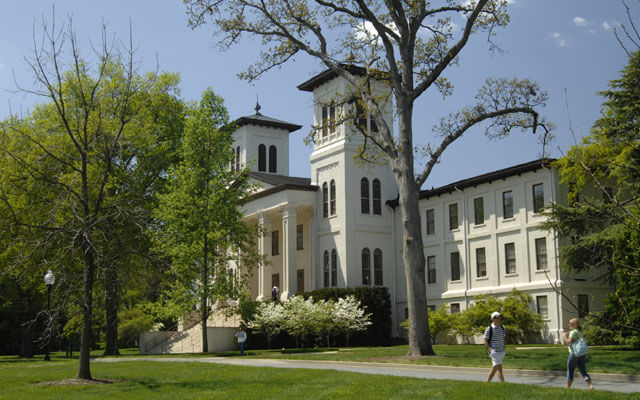
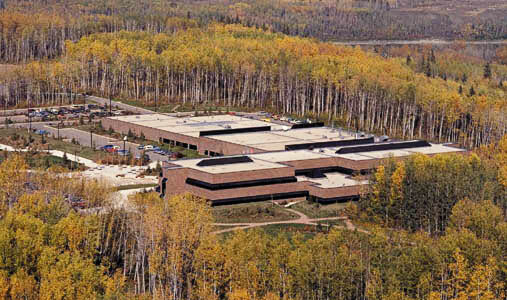

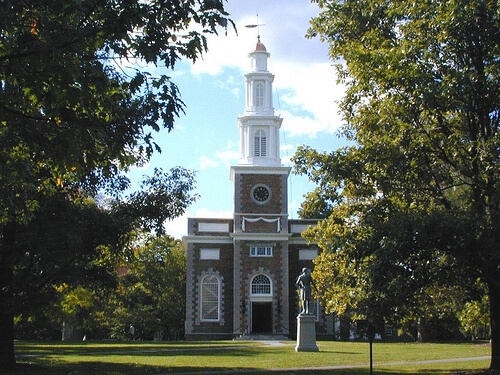


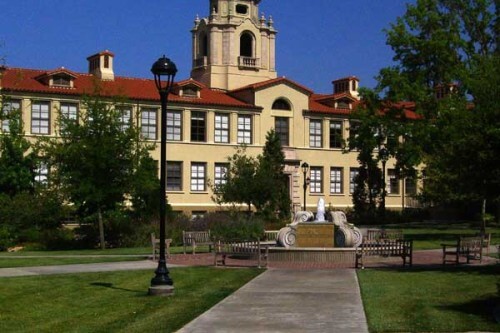

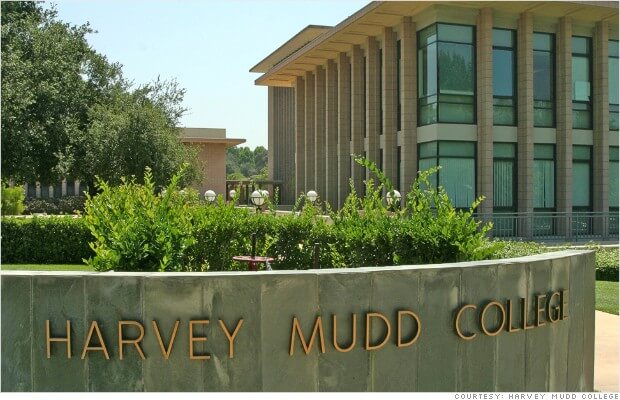
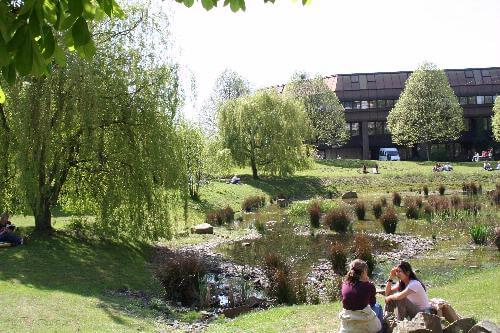

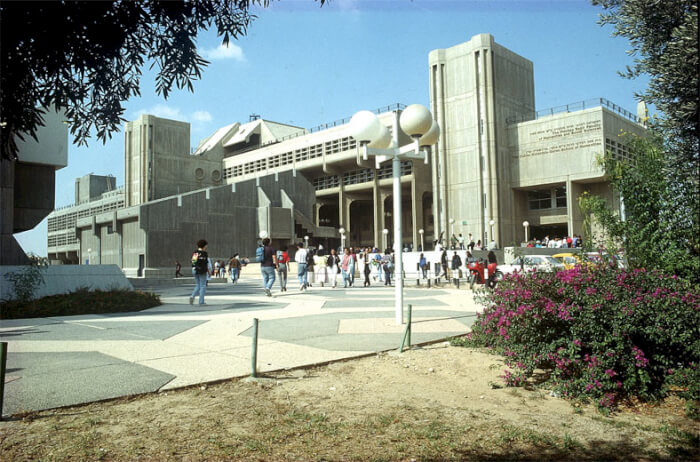
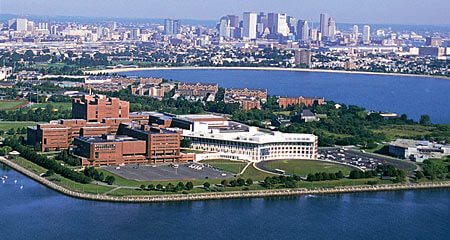

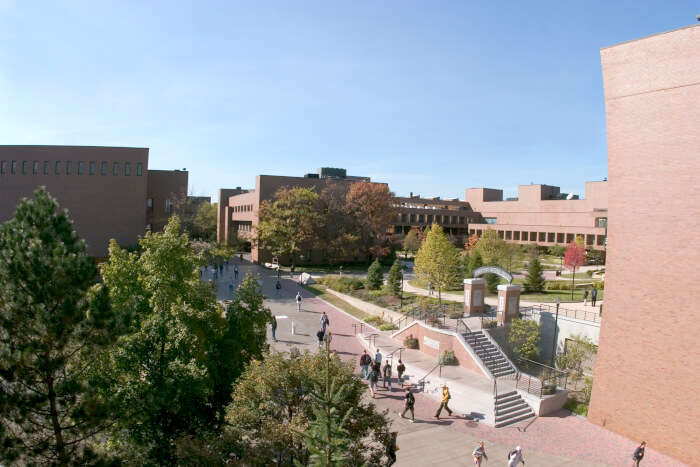
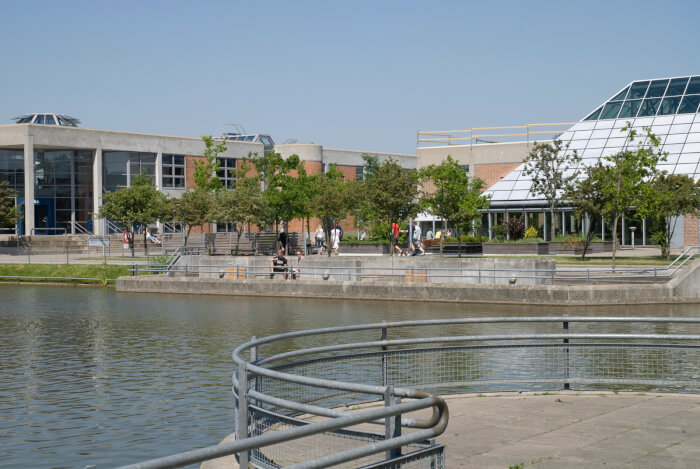





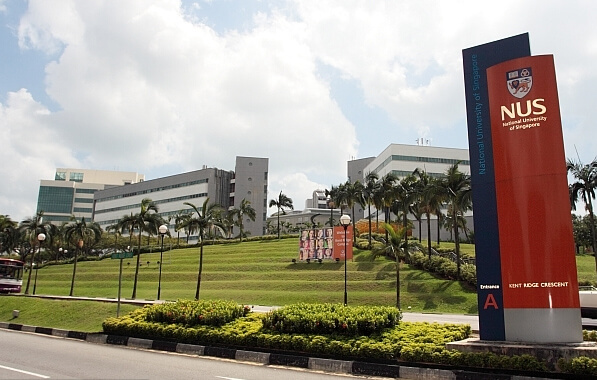
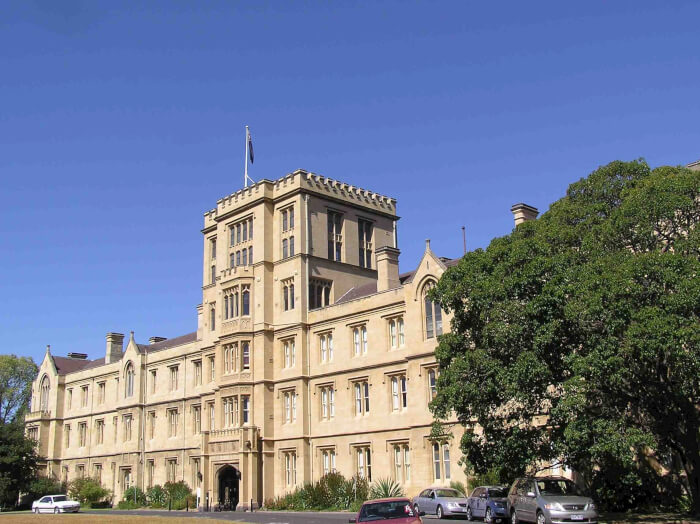
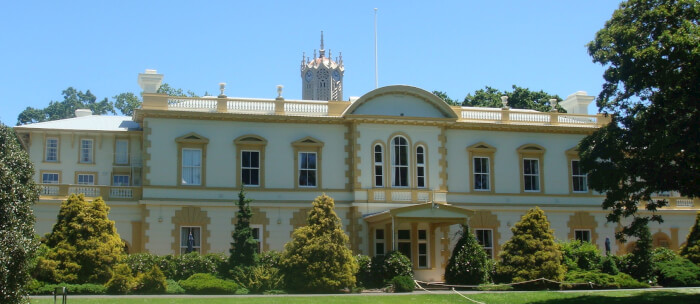
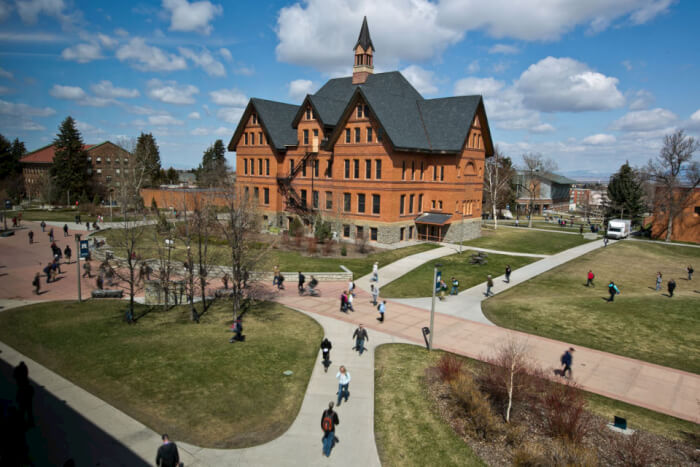
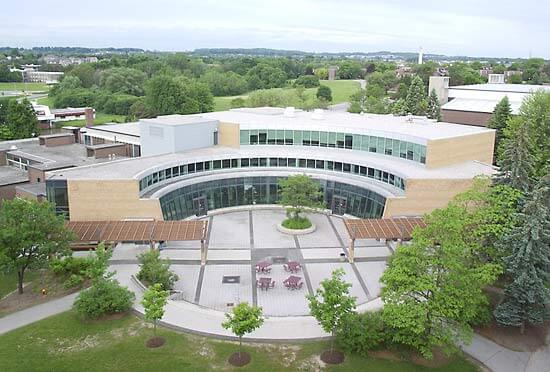


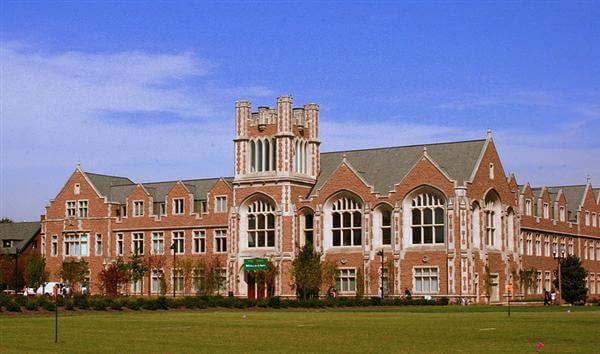

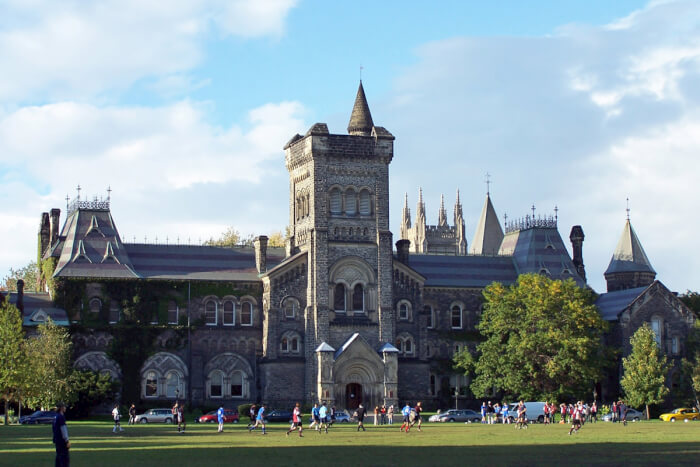

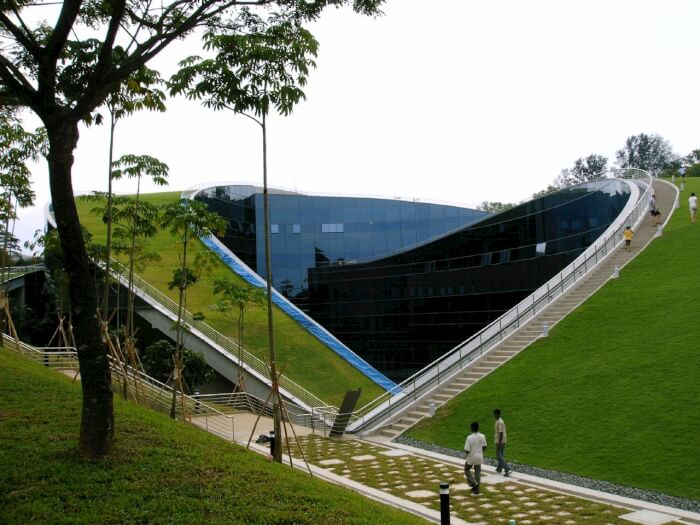
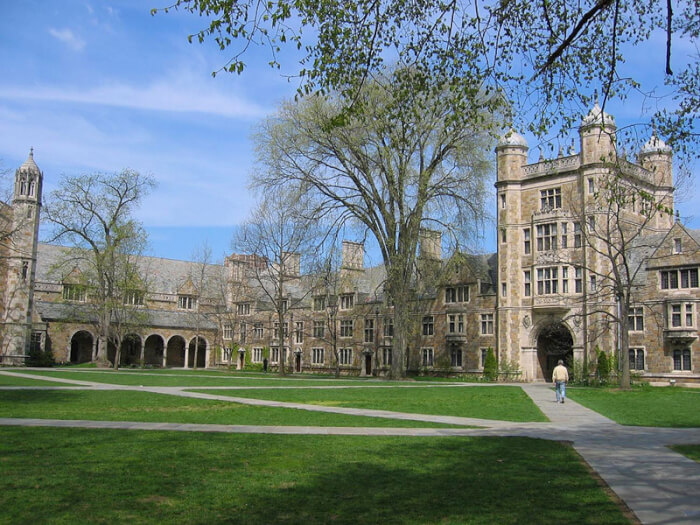

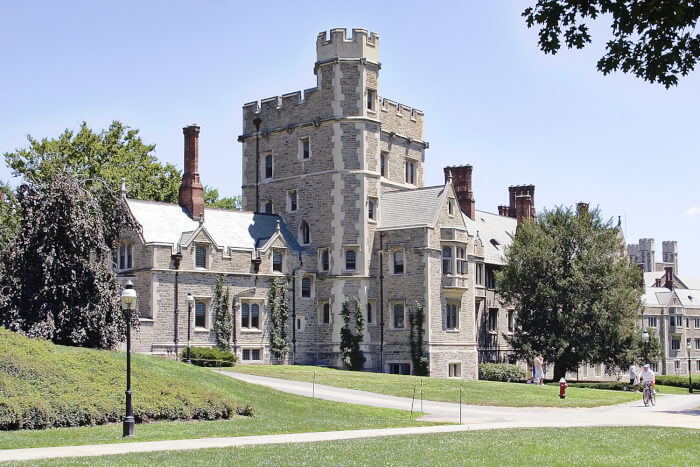
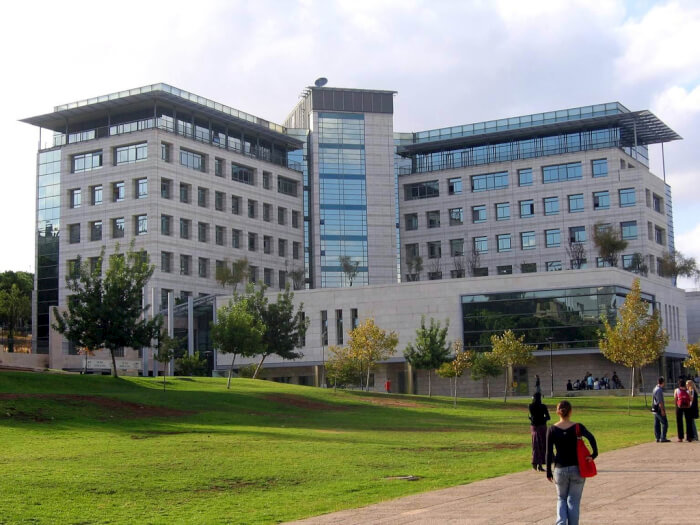


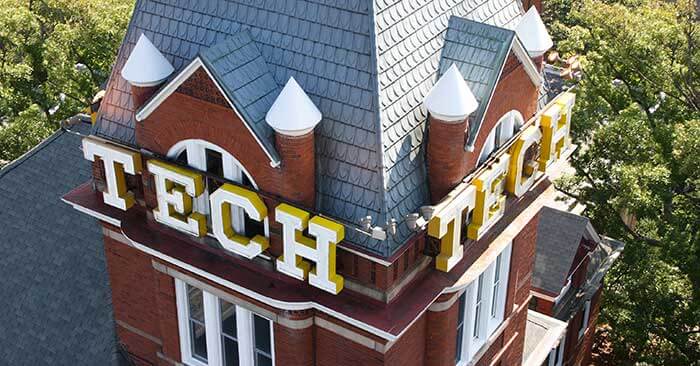

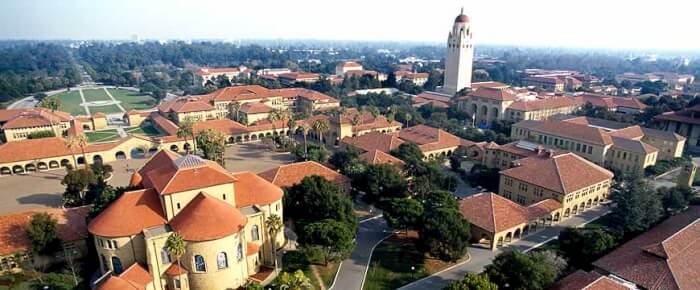


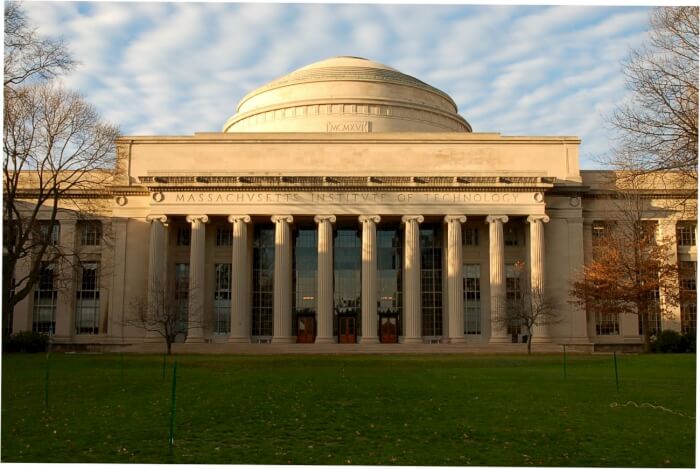

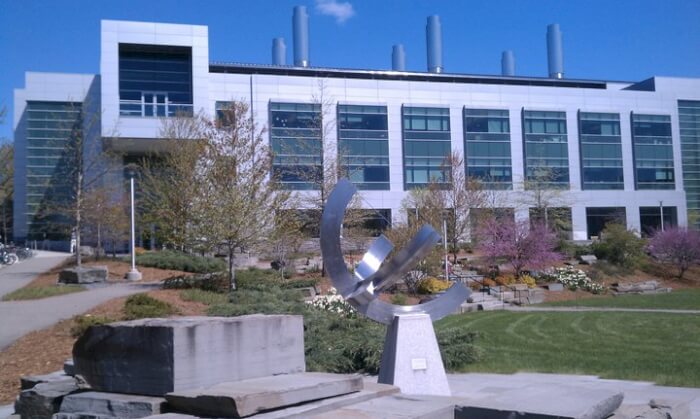
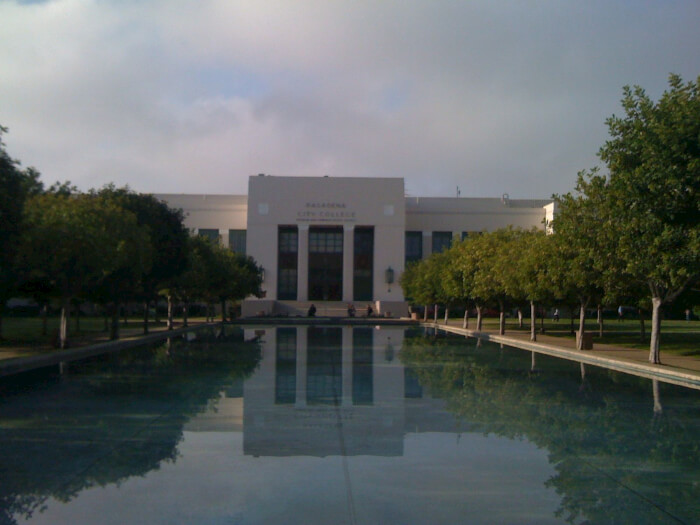







No comments: